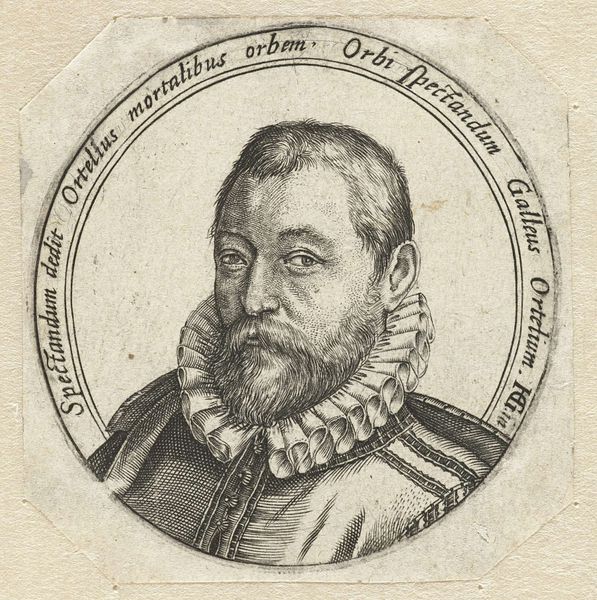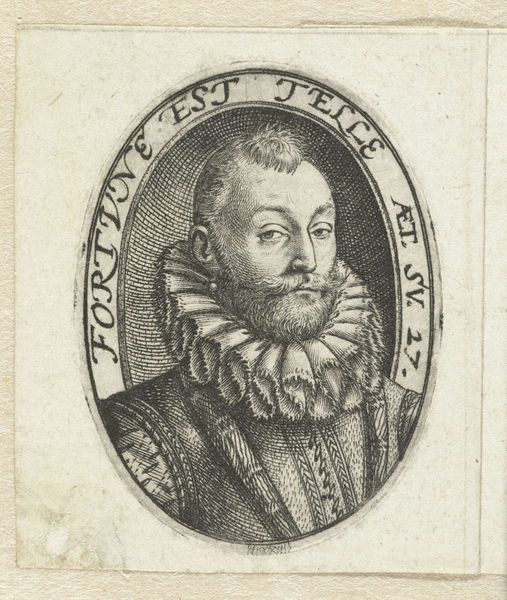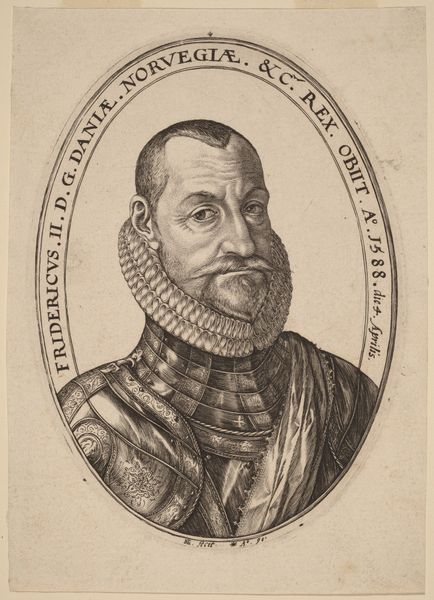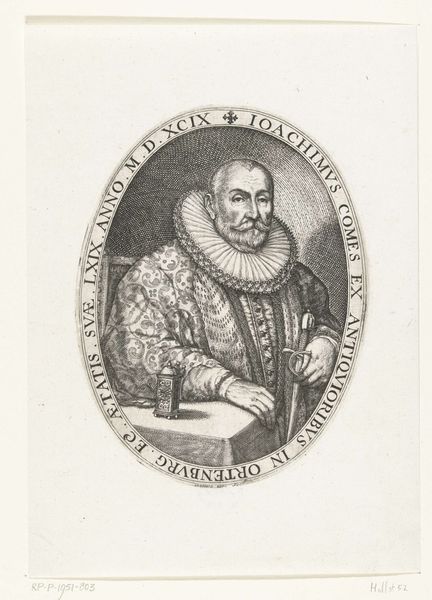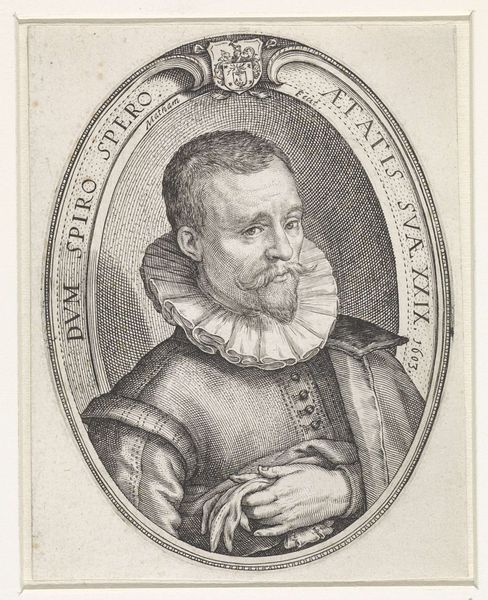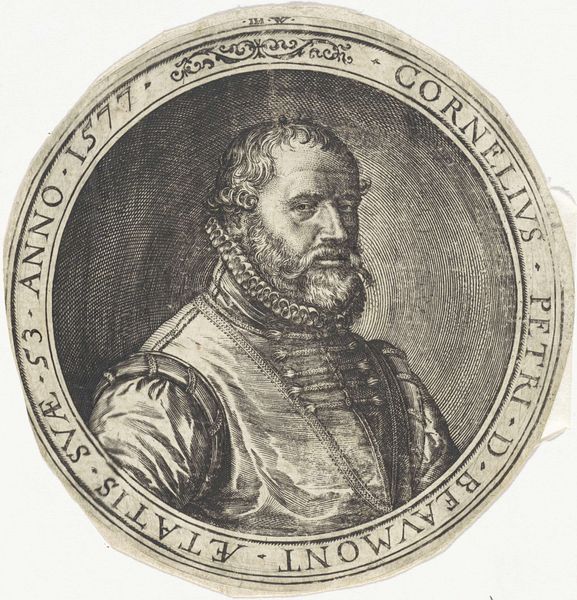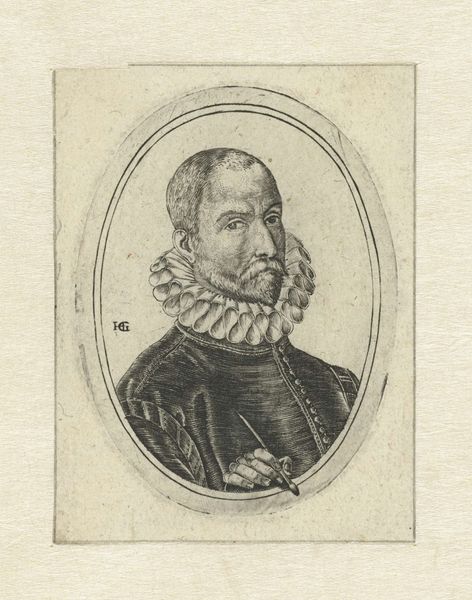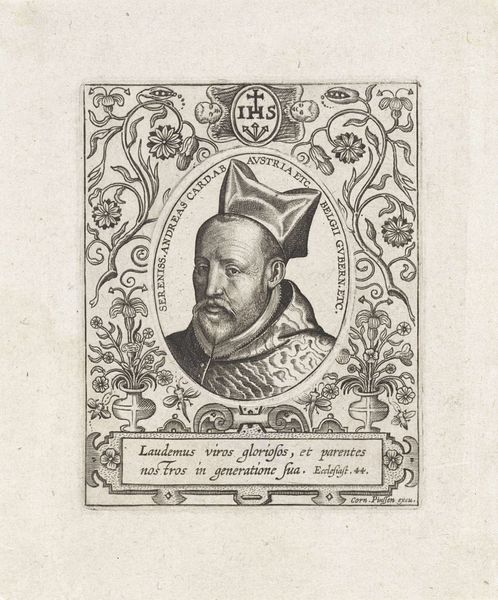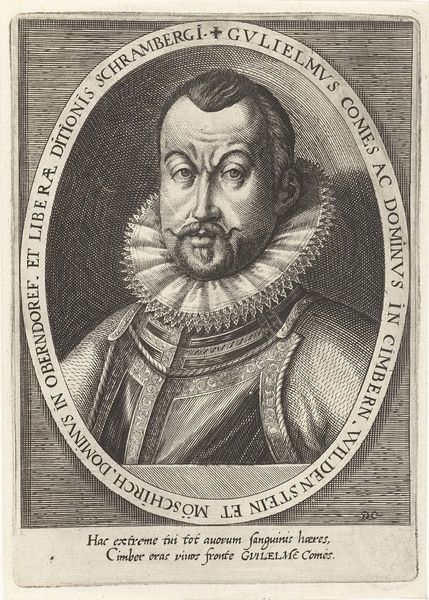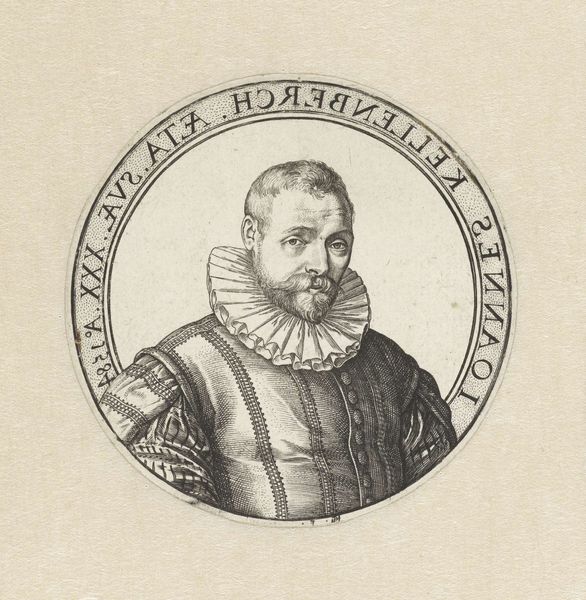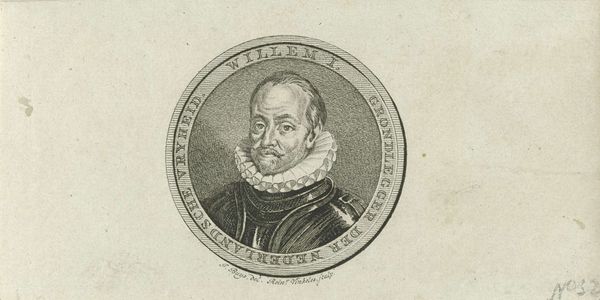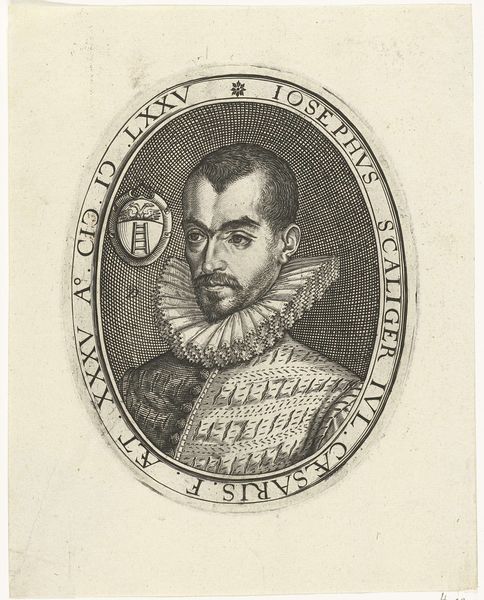
Portret van Dirck Jansz. Uyttenbroeck, burgemeester van Delft, op 51-jarige leeftijd 1577
0:00
0:00
print, engraving
#
portrait
# print
#
old engraving style
#
11_renaissance
#
engraving
Copyright: Rijks Museum: Open Domain
Curator: Welcome to the Rijksmuseum. We're standing before a striking portrait: "Portret van Dirck Jansz. Uyttenbroeck, burgemeester van Delft, op 51-jarige leeftijd," created in 1577 by Wierix. It’s an engraving, offering us a window into the late Renaissance world of Dutch governance. Editor: My immediate impression is gravitas, a severe dignity. The close cropping of the subject within that perfect circle only enhances that sense. But what fascinates me most is that circle itself, inscribed with precise text and decorations—a self-contained universe of authority. Curator: The choice of engraving as a medium speaks volumes. Printmaking allowed for wider dissemination of portraits, extending influence. Consider the labor involved—the meticulous carving of lines into a metal plate to capture detail. Each tiny hatch mark represents time, skill, and intention. Editor: Absolutely. It is fascinating how those linear details bring weight to the man, Dirck Jansz, the mayor. What I find particularly striking is the repeated emphasis on his identity: His name and age literally circle him, and even adornments become part of a symbolic shield. The artist creates a sort of emblem of civic power. Curator: Notice the attention to detail in his clothing. The intricate patterns and texture suggest luxurious fabrics and the wealth necessary to acquire them. These were status symbols. Think about the market for these prints, primarily wealthy burghers and civic leaders, and the way they were consumed, not simply as art, but as emblems of class and influence. Editor: The more I examine this piece, the more it evokes a sense of stability and permanence that was critical to those in power. From the ornamental details in the upper section to his unwavering expression and elaborate collar— everything emphasizes the solidity of his social role. One could suggest this wasn’t a simple portrait, but rather, it was meant to project strength, permanence, and a claim to enduring recognition within Delft's social tapestry. Curator: Looking at it from a Materialist perspective allows me to appreciate not just what it represents, but the how, and the why it was made in the first place. Considering that each piece meant that materials and manpower was needed. The art also reflects that status and authority were not abstract things but something to be owned and performed. Editor: Examining how this portrait acts as a tapestry of signs shows how artistic production contributes to forming societal narratives and collective memories, leaving lasting impact on both individual identity and communal consciousness.
Comments
No comments
Be the first to comment and join the conversation on the ultimate creative platform.
